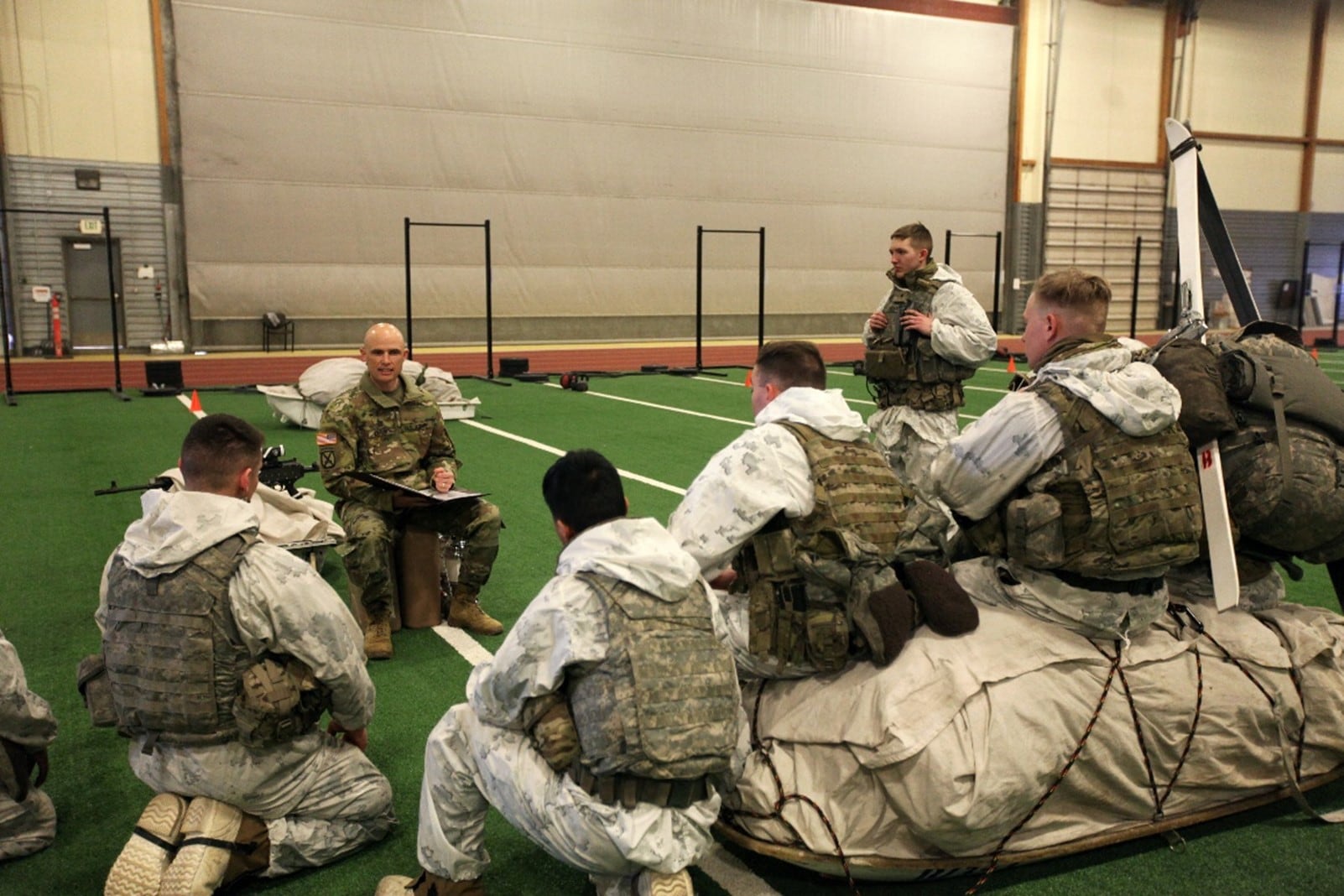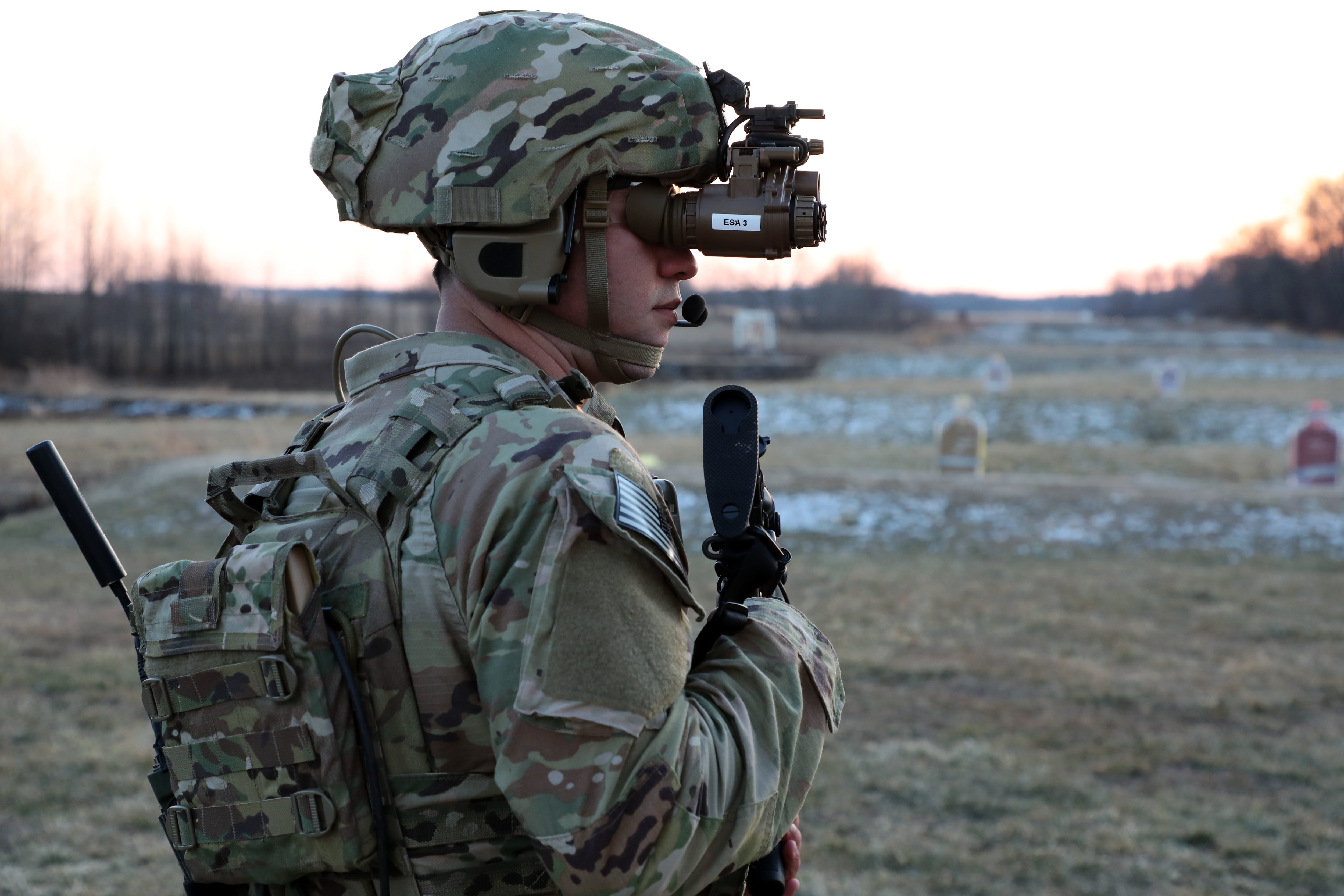FORT BELVOIR, Va. — When there’s a need for gear, the Army’s program office in charge of equipping soldiers either finds or builds what’s required, then delivers it to the force. Here’s a look at some of Program Executive Office Soldier’s projects.
Project Polaris
Project Polaris, a new initiative that coordinates efforts across the force in what the Army calls the close-combat integration enterprise, aims to make the infantry brigade combat team more lethal.
To do that, PEO Soldier commander Brig. Gen. Christopher Schneider told Army Times, the organization is focused on ensuring each part of the brigade is lighter, more mobile, survivable and more lethal.
An infantry brigade combat team, or ICBT, can be more lethal if its members have lighter body armor because of the extra mobility that provides. Computer networks that are able to handle more data and transfer information faster can also contribute to the ICBT’s lethality.
This effort also includes requirements, acquisition, science and technology organizations — including the Soldier Lethality Cross-Functional Team, the Maneuver Capabilities Development and Integration Directorate, the Army Research Laboratory — and Combat Capabilities Development Command entities such as the Soldier Center, the Armaments Center, and the C5ISR Center’s Research and Technology Integration Directorate.
The list is expected to grow as the yearslong IBCT focus continues, officials said.
“We’re spending a lot of time on architecting an IBCT the right way,” Schneider noted, adding that the group is taking a systems engineering approach to how it looks at each piece of gear, and how it fits into the larger unit’s mission.
That started at the squad level with a key question: How many soldiers, with what equipment, training and responsibilities, are best suited to fit into the IBCT of the future?
The next levels will be platoons, companies and battalion enablers across the entities that develop such formations and train them. An example includes powering all the new and existing equipment as well as reducing the gear load on units.
That will require common data standards for the Army’s battlefield network. It will also mean smaller things that make a big difference, such as creating a common controller for a variety of unmanned systems. That way soldiers learn, use, inventory and maintain one controller for multiple systems rather than having a different system for each, which would increase logistics and training demands.
By tying these together, Schneider said, it will help with budget funding requests and the search for efficiencies as a wide swath of organizations develop equipment for the same formations.
LASSO
One new program that PEO Soldier added this past year falls squarely in that frame.
Army senior leaders assigned the Low Altitude Stalking and Strike Ordnance, or LASSO, program to PEO Soldier and teammates at Fort Moore, Georgia, home of the Maneuver Capability Development and Integration Directorate.
LASSO is a man-portable, tube-launched, lethal payload munition, according to an Army release. Based on a drone, it features an electro-optic/infrared sensor, precision flight control, and the ability to fly, track and engage non-line-of-sight targets and armored vehicles with precision lethal fires, the release stated.
Primarily an anti-tank capability, Army officials expect LASSO to become a program of record and inform larger loitering munitions research for units at various echelons.
Ops and training
Beyond the initial stages of analyzing and adding equipment, PEO Soldier kicked off two new efforts over the past year to help units effectively use and keep using the gear they get: operational kit analysis and new equipment training.
Sgt. Maj. Daniel Rose, the PEO’s senior enlisted adviser, told Army Times that the team took its seven noncommissioned officers — mostly sergeants first class and master sergeants — each with decades of experience including overseas deployments and combat, then formed both training teams and a board.
The team dedicated to operational kit analysis asks units they visit to layout what they pack for a 72-hour mission. The team then works through the assigned-gear list to evaluate what’s required and what’s optional, then compare it to what soldiers in training have received. The aim is to lighten the load and ensure soldiers know how to properly use their gear.

That folds into the team’s new equipment training initiative. While NCOs at units receiving gear get their standard “train the trainer” education upon delivery, perhaps as quickly as six months or so later, many of those trainers may have rotated out of the unit.
The acquisition work of procuring and fielding new equipment is largely a logistical effort. What can get lost sometimes is operational expertise.
That’s where Rose’s team comes in handy, he said.
“We’re afraid that they’re just going to put it in their arms or supply room and not take it out,” Rose said. “Then we’ll look down the road and we’ll still be having a gap in the capability.”
And if the formation hasn’t had regular, recent practice with the new equipment, they may lack the expertise to use it effectively.
At the same time, Rose’s team is analyzing how well the training on new gear is working, while revamping the next round of new equipment training for the next delivery, he said. That includes detailed reviews by the NCO board at PEO Soldier on programs of instruction for the gear they issue and the kit that units already carry for combat.
Both are new programs, started in early 2023, and Rose expects the knowledge base and analysis to further improve.
Todd South has written about crime, courts, government and the military for multiple publications since 2004 and was named a 2014 Pulitzer finalist for a co-written project on witness intimidation. Todd is a Marine veteran of the Iraq War.




